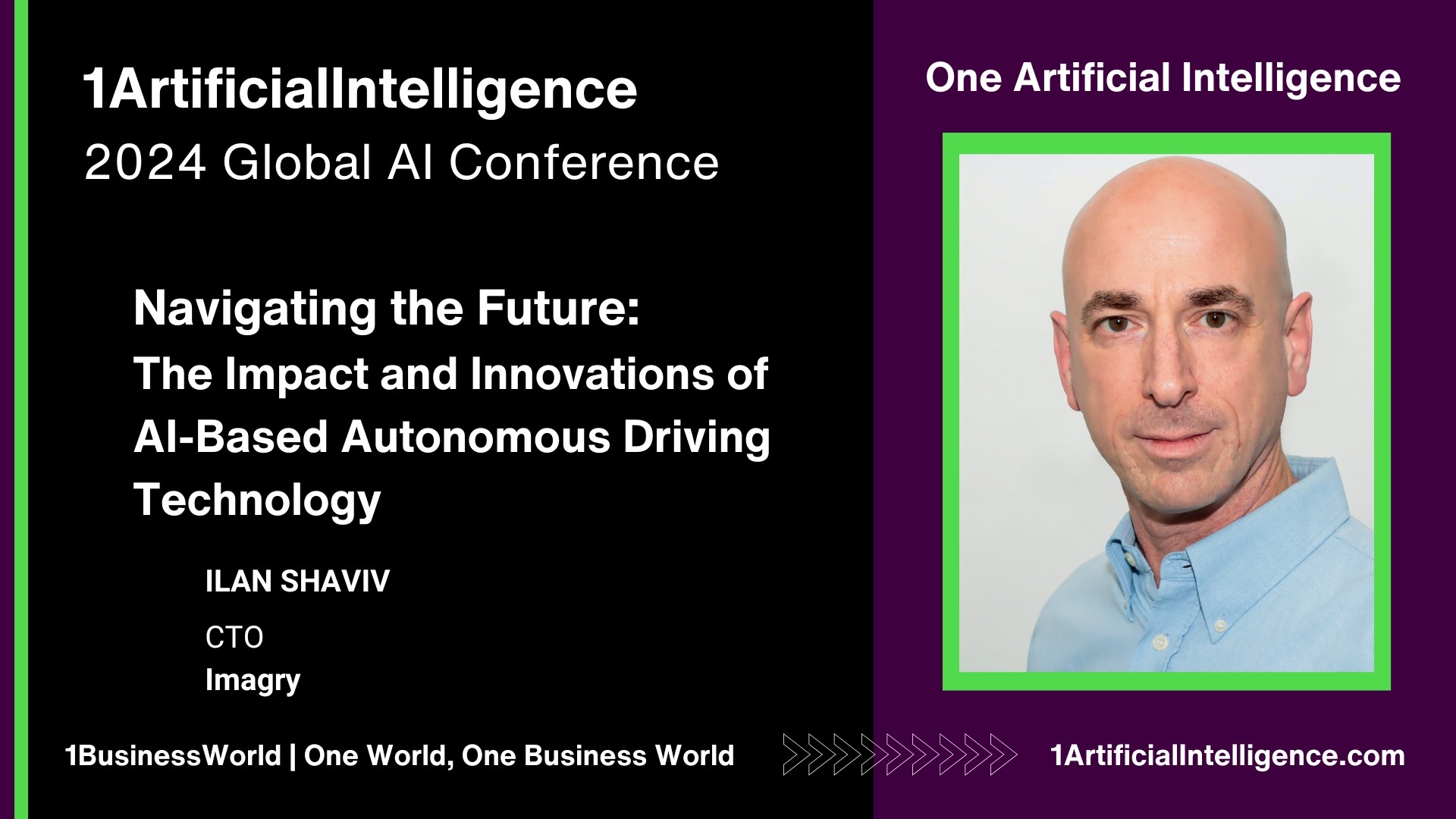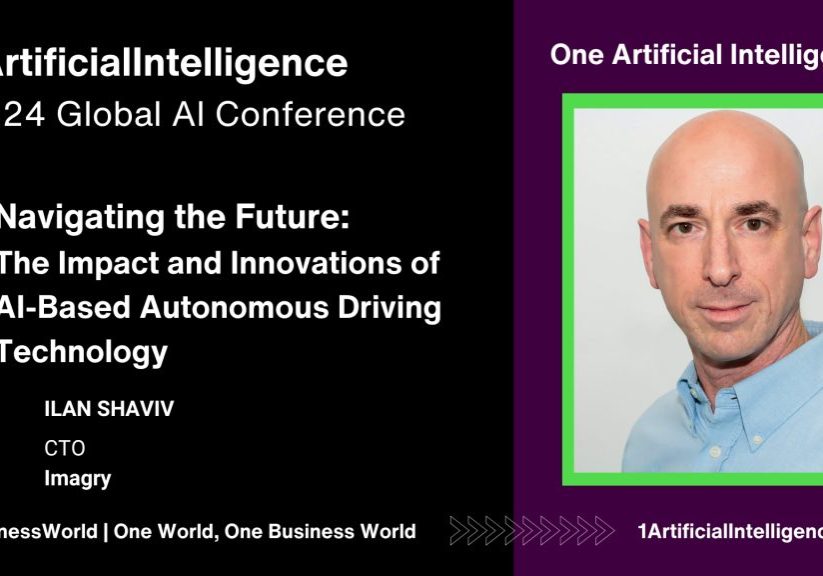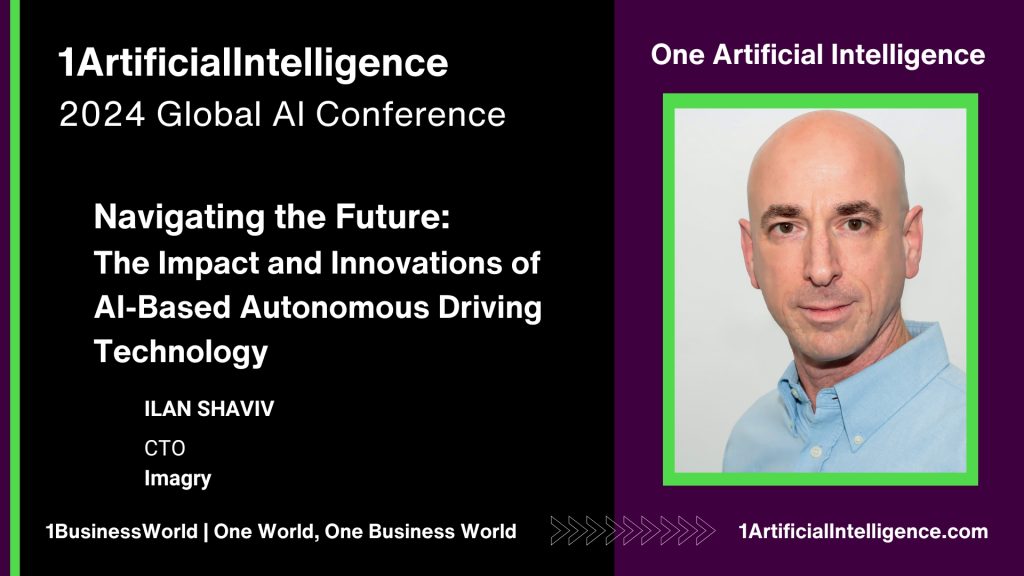
Navigating the Future: The Impact and Innovations of AI-Based Autonomous Driving Technology
At the 2024 Artificial Intelligence Conference, Ilan Shaviv, CTO of Imagry, delivered an enlightening presentation on the future of AI-based autonomous driving technology. Shaviv's discussion, titled "Navigating the Future: The Impact and Innovations of AI-Based Autonomous Driving Technology," provided an in-depth look into how AI is revolutionizing the automotive industry by enabling vehicles to drive autonomously.
The Evolution of Imagry and AI in Autonomous Driving
Imagry, established in 2015 as a high-end vision computer application company, transitioned to the automotive sector in 2018, focusing on developing autonomous driving software. The company’s AI-driven High-Definition Mapping (HDM) system, inspired by biological processes, plays a crucial role in real-time environmental perception and motion planning. Shaviv’s presentation centered on how AI technologies, particularly neural networks, facilitate the understanding and decision-making processes required for autonomous driving.
Understanding AI in Autonomous Vehicles
The Role of Sensors and Neural Networks
The journey towards fully autonomous vehicles begins with sensors. Modern autonomous vehicles are equipped with an array of sensors, including cameras, radars, and LiDARs, which continuously feed data into neural networks. These networks, designed to mimic the human brain, perform two primary tasks: object detection and image segmentation.
Object Detection and Image Segmentation:
Neural networks process the sensory input to identify and categorize objects around the vehicle. This includes detecting other vehicles, pedestrians, road signs, and obstacles. Image segmentation further refines this information by mapping the road, crosswalks, and lanes. The segmented images from multiple sensors are then stitched together to create a comprehensive surround map of the vehicle’s environment.
Motion Planning and Decision Making
Once the vehicle's surroundings are mapped, the next step involves motion planning. This process entails creating a route or trajectory that the vehicle will follow. For instance, when navigating a straight stretch of road with multiple lanes, the motion planner must decide whether to stay in the current lane or switch to another, guided by an intent manager fed by a navigation layer that provides high-level directions.
Shaviv highlighted the challenges of real-time image segmentation, noting that while shortcuts like pre-mapped HD maps can simplify implementation, they come with drawbacks such as data obsolescence and cyber vulnerabilities. Conversely, HD map-less systems rely entirely on real-time perception, making them more robust against outdated data but significantly more complex to implement.
Adapting to Unseen Situations
A significant challenge in autonomous driving is the neural network's ability to recognize and respond to previously unseen objects or scenarios. Shaviv illustrated this with an example of a partly occluded vehicle that the network failed to identify. To address such issues, systems must include an unknown object detection mechanism that allows the vehicle to recognize the presence of an obstacle, even if it cannot precisely identify it, ensuring safe navigation.
Pros and Cons of Different Approaches
HD Maps vs. HD Map-less Systems
Shaviv contrasted two primary approaches to autonomous driving: using HD maps and HD map-less systems. HD maps provide a pre-mapped, high-definition view of the driving environment, simplifying object detection and motion planning. However, they depend on continuous communication for data updates and are prone to obsolescence.
On the other hand, HD map-less systems rely entirely on real-time data from the vehicle's sensors, which aligns more closely with how human drivers operate. These systems are self-sufficient and less vulnerable to cyber-attacks but require advanced onboard perception capabilities and complex real-time processing.
Rule-Based vs. Neural Network-Based Motion Planning
In motion planning, rule-based systems use predefined "if-then" statements to navigate various scenarios, offering high explainability that is favored by safety and regulatory bodies. However, they struggle with adapting to new, unforeseen situations.
Neural network-based systems excel in adapting to new circumstances by interpolating between known situations, although they lack the same level of explainability. Shaviv suggested a hybrid approach that leverages the strengths of both methods while mitigating their weaknesses.
Modular vs. Monolithic Neural Networks
Shaviv discussed the trade-offs between using multiple small neural networks versus a single large one. A modular approach, where different tasks are handled by separate networks, offers better traceability, easier maintenance, and adaptability. For example, a system trained to drive on the right side of the road in the US can be tweaked to drive on the left side in the UK without retraining the entire network.
In contrast, a monolithic neural network handles all tasks in a single, large network. This approach simplifies training and can use unsupervised learning techniques, but it creates a "black box" with low explainability and high maintenance complexity.
Achieving Higher Levels of Autonomy
Shaviv emphasized that the ultimate goal of AI in autonomous driving is to achieve higher levels of autonomy (Level 3 and Level 4), where vehicles can operate without human intervention in most conditions. To reach these levels, autonomous systems must be location-independent and capable of handling diverse driving environments.
Imagry's approach focuses on using cameras as the primary sensors, which significantly reduces costs and makes the technology more accessible for mass-market adoption. By driving in mixed urban traffic across multiple continents and sides of the road with the same neural network, Imagry demonstrates the robustness and versatility of their AI-driven system.
Key Take Aways
Ilan Shaviv's presentation at the 2024 Artificial Intelligence Conference provided a comprehensive overview of the innovations and challenges in AI-based autonomous driving technology. His insights into sensor fusion, real-time perception, motion planning, and the trade-offs between different AI approaches shed light on the future of autonomous vehicles. As AI continues to evolve, it promises to transform not only the automotive industry but also the broader landscape of transportation, paving the way for safer, more efficient, and more accessible mobility solutions.












